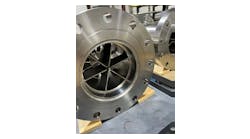Albert Einstein was correct in his prediction that E=mc2, according to scientists at the National Institute of Standards and Technology (NIST, www.nist.gov) and the Massachusetts Institute of Technology (MIT, web.mit.edu), who say they have conducted the most precise direct test ever of what is perhaps the most famous formula in science.
In experiments described in the Dec. 22, 2005 issue of Nature, the researchers added to a catalog of confirmations that matter and energy are related in a precise way. Specifically, energy (E) equals mass (m) times the square of the speed of light (c2), a prediction of Einstein’s theory of special relativity. By comparing NIST measurements of energy emitted by silicon and sulfur atoms and MIT measurements of the mass of the same atoms, the scientists found that E differs from mc2 by at most 0.0000004, or four-tenths of one part in one million. This result is "consistent with equality" and is 55 times more accurate than the previous best direct test of Einstein’s formula, according to the paper.
Such tests are important because special relativity is a central principle of modern physics and the basis for many scientific experiments. In a press release, the NIST says other researchers have performed more complicated tests of special relativity that imply closer agreement between E and mc2 than the NIST/MIT work, but additional assumptions are required to interpret their results, making these previous tests arguably less direct.
The Nature paper describes two very different precision measurements — one done at the NIST by a group led by the late physicist Richard Deslattes and another done at MIT by a group led by David Pritchard.
Deslattes developed methods for using optical and X-ray interferometry — the study of interference patterns created by electromagnetic waves — to precisely determine the spacing of atoms in a silicon crystal and using such calibrated crystals to measure and establish more accurate standards for the very short wavelengths characteristic of highly energetic X-ray and gamma-ray radiation. Gamma-ray wavelengths emitted by silicon and sulfur atoms were measured in this way and then converted to corresponding energy levels.
The MIT team measured the mass numbers used in the tests of Einstein’s formula by placing two ions (electrically charged atoms) of the same element, one with an extra neutron, in a small electromagnetic trap. The difference in the number of revolutions per second around the magnetic field lines within the trap for the two ions was then used to greatly improve measurements of the atomic masses of silicon and sulfur.
For more information, see www.nist.gov/public_affairs/releases/einstein.htm.
— Flow Control Staff

